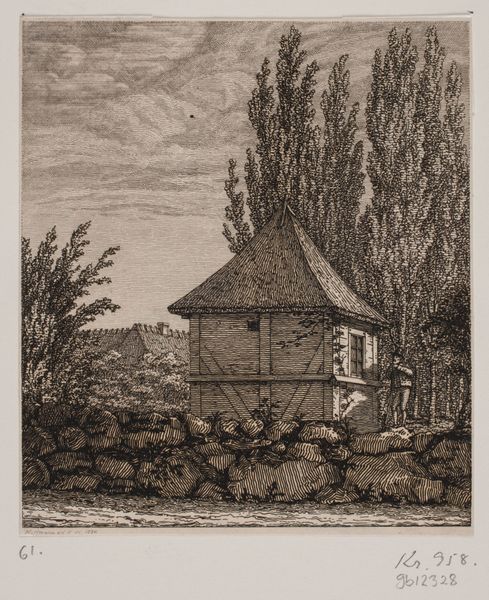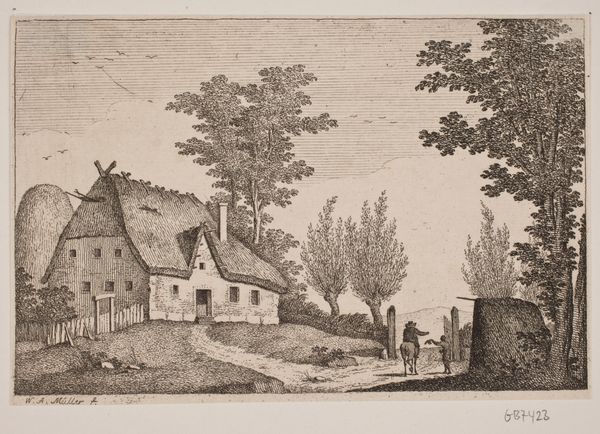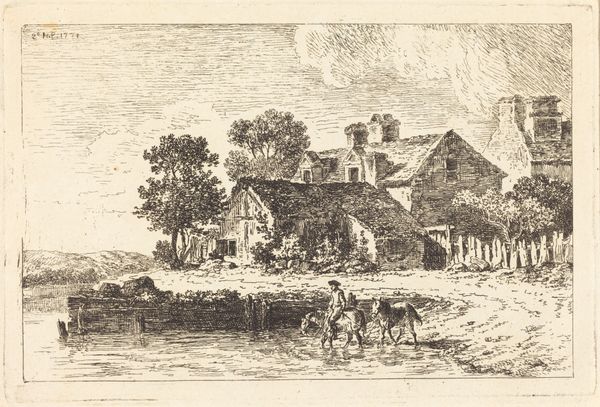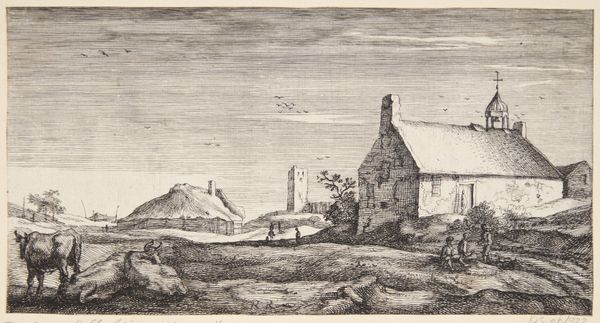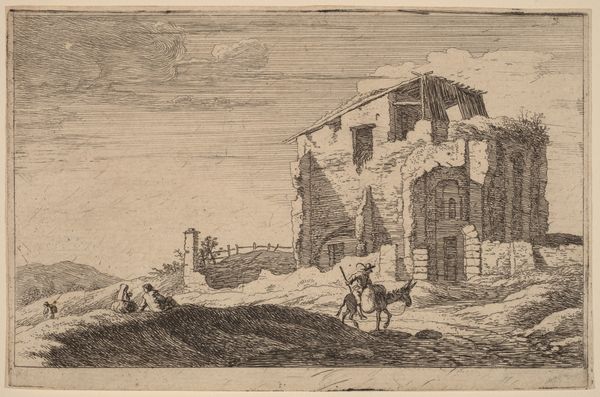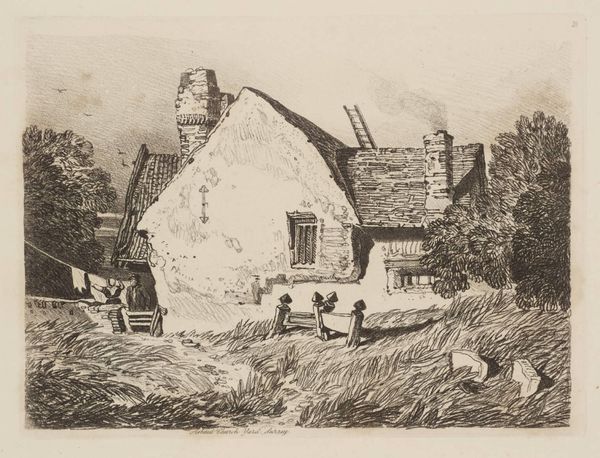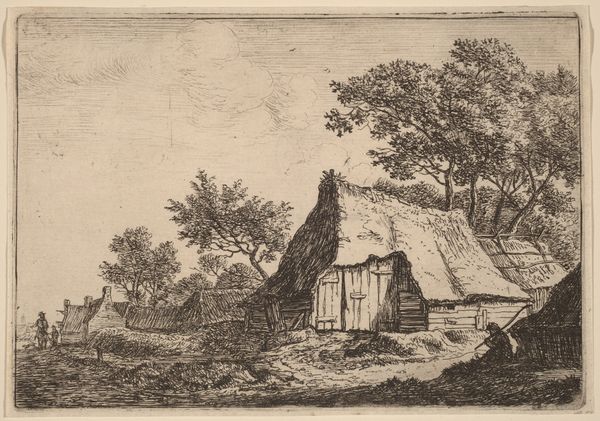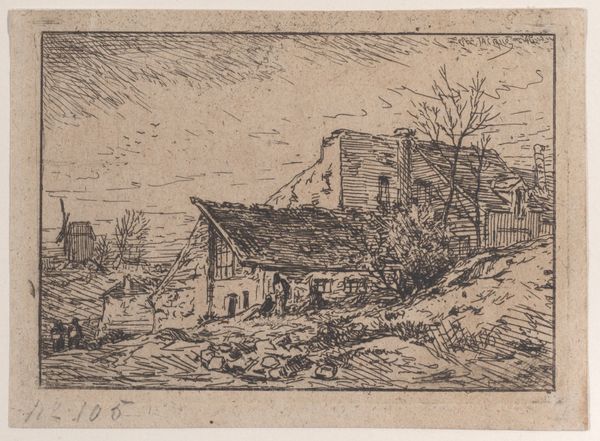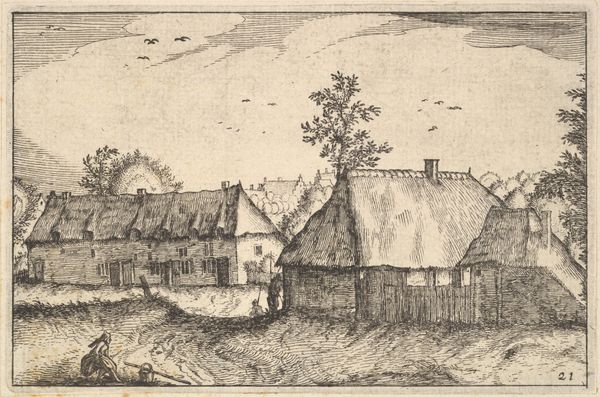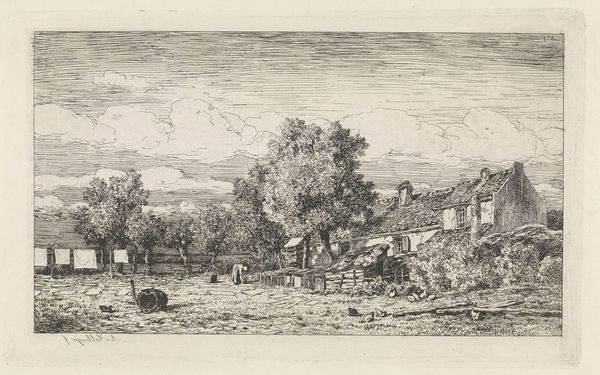
print, etching, engraving
# print
#
etching
#
landscape
#
etching
#
romanticism
#
engraving
Dimensions: 97 mm (height) x 129 mm (width) (bladmaal)
Curator: Rosalie Holm created this print, “Schweizerhus,” in 1833. It's a wonderful example of early 19th-century etching and engraving. Editor: My first impression is how evocative it is, like stepping into a fairy tale! The detailed textures, especially on that thatched roof and stone facade, give it a palpable, almost tactile quality. Curator: Absolutely, and I think that reflects a growing Romantic interest in vernacular architecture, looking back to these building styles for notions of "authenticity," especially within a burgeoning tourist market eager to experience the "genuine" Switzerland. Editor: Yes, there's that symbolic resonance! The house almost becomes a character. The plumes of smoke from the chimney suggest hearth and home, tradition and permanence. It evokes those feelings strongly. Curator: It's interesting to consider the medium too; the lines of the etching capture this feeling, but this print form also helped distribute this specific image of Swiss identity on a wider scale. Remember, Switzerland was itself solidifying as a nation at this point in history. Editor: I also notice the two sculpted horse heads adorning the roof's peak, a sign perhaps relating to traditional folklore or even spiritual protection. The building, in essence, visually proclaims its history and belonging. It anchors it to a past. Curator: Precisely, that echoes larger debates at the time regarding Swiss independence. Were they tied to these symbols? Where did this visual history fit in a nation rapidly changing politically? We can certainly see Romantic ideals being promoted, with landscape and buildings entwined. Editor: It makes you wonder how conscious the artist was of all of those layers of meaning, and also how later generations, including us, might interpret and re-interpret that rich symbolism through history. Curator: A good question indeed. Hopefully, these reflections have given you fresh perspectives on "Schweizerhus," prompting questions on the meaning of identity in a historical context. Editor: It certainly speaks of home, history and how these feelings connect through generations.
Comments
No comments
Be the first to comment and join the conversation on the ultimate creative platform.

